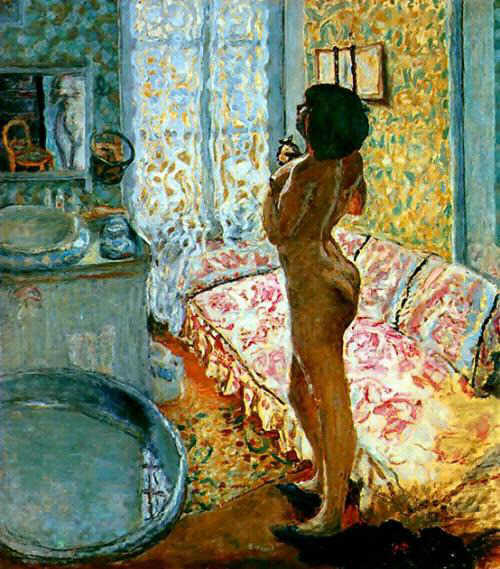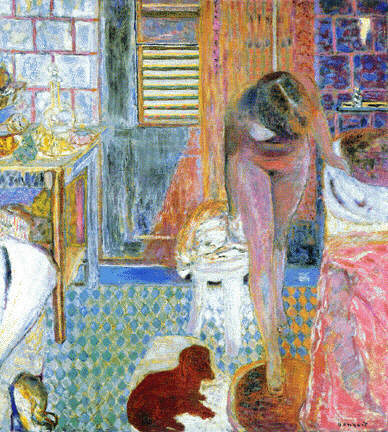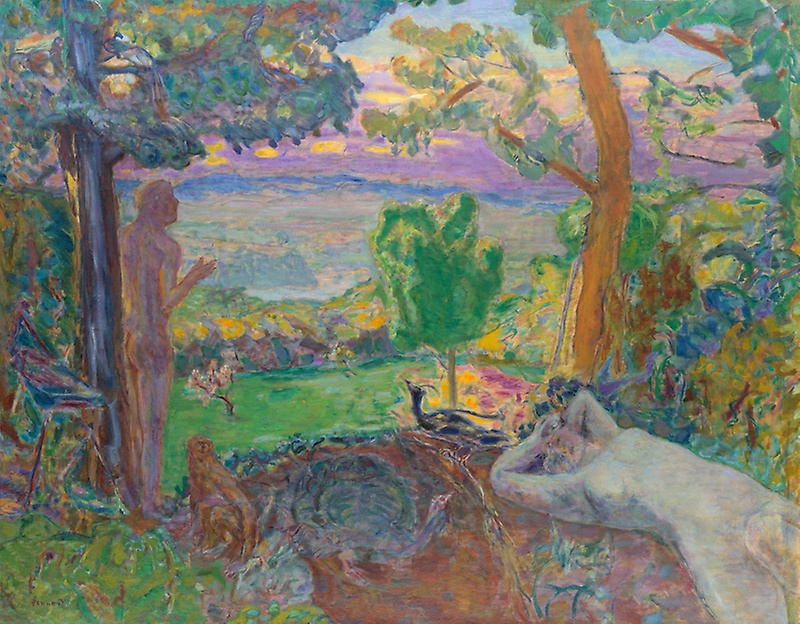-


 Pierre Bonnard
Pierre Bonnard
French
Artist
Pierre Bonnard was not a revolutionary artist, but he synthesized several different styles to create works of striking painter lines and memorably glorious color. Pierre Bonnard borrowed a lightness from the Impressionists, a bold palette from the Post-Impressionists and Fauves, a compressed dimensionality from Matisse and added an immense intensity of his own. Pierre Bonnard's artwork combines the poignancy of Degas with the lyricism and luminosity of Rothko. Pierre Bonnard was a French painter, lithographer, and illustrator. Pierre Bonnard is credited with being a founding member of Les Nabis. Pierre Bonnard was born in Fontenay-aux-Roses.
He led a happy and careless youth as the son of a prominent official of the French Ministry of War. At the insistence of his father, Bonnard studied law, graduating and practicing as a barrister briefly. While still studying law, which Pierre Bonnard gave up in 1885, Pierre Bonnard enrolled at the 'Académie Julian' in Paris, a liberal Parisian art school, where he made friends with Paul Sérusier, Mauris Denis, Henri Ibels, and Paul Ranson. Pierre Bonnard soon decided to become an artist. The five friends formed a society known as Nabiim or the Nabis after the Hebrew for 'prophets'. Together they studied works by van Gogh, Paul Cézanne and Claude Monet, but they were most impressed by Gauguin.
The Nabis developed a style characterized by flat areas of boldly juxtaposed but muted colors and heavily outlined surface patterns. They were unified by the decorative character of their work and their dislike of impressionism. In 1891 Pierre Bonnard said that "painting must be above all decorative. Talent shows itself in the way in which the lines are distributed." Pierre Bonnard was known for his ability to convey a sense of charm. He based his work on what he saw around him, depicting the banal, everyday sights and occurrences of Paris-children at play, a few animals, or perhaps a brief meeting at an intersection.
In 1891 Pierre Bonnard met Toulouse-Lautrec and began showing his work at the annual exhibition of the Société des Artistes Indépendants. Pierre Bonnard had five paintings represented there. His first show was at the Galerie Durand-Ruel in 1896. He began attending to printed graphics and designed the poster 'France-Champagne'. In 1893, Bonnard met Maria Boursin on a street in Paris. She was 26 years old and had changed her name to Marthe de Méligny. According to Whitfield, "She had so effectively erased her past that not even Bonnard learnt her real name until their marriage in 1925, nearly thirty years after they began living together." Pierre Bonnard kept their marriage a secret from his family. Bonnard is known for his intense use of color, especially via areas built with small brush marks and close values. Pierre Bonnard's often complex compositions, typically of sunlit interiors of rooms and gardens populated with friends and family members, are both narrative and autobiographical.
Pierre Bonnard did not paint from life but rather drew his subject, sometimes photographing it as well, and made notes on the colors. He then painted the canvas in his studio from his notes. Around the turn of the century Pierre Bonnard began to move away from the elements of Art Nouveau and Symbolism, his earlier unobtrusive color gave way to a bright, colorful palette and his street scenes were gradually replaced by pastoral, idyllic scenes, nudes and interiors.